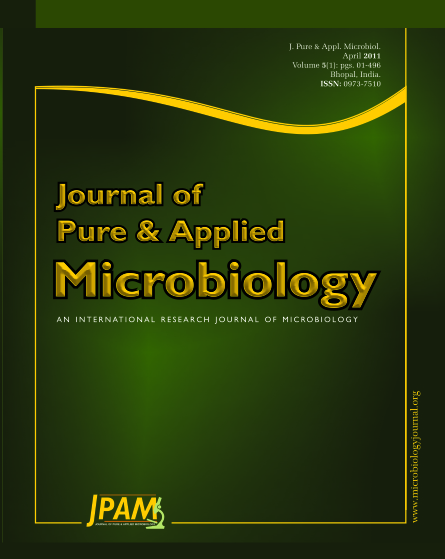Curcuminoids are the polyphenolic pigments found in the turmeric. The major curcuminoids are curcumin, demethoxy curcumin, and bis demethoxy curcumin. These substances comprises 3 to 6% of curcuma longa L. curcumin makes up 70 to75% of the curcuminoids, demethoxy curcumin 15 to20% and bisdemethoxy curcumin about 3%. The present study is planned to study the purity and antibacterial study of curcumin. Curcumin from dried, powdered rhizome are extracted with the polar solvents by cold and hot extraction. Some of the polar solvents used in which curcumin is soluble are IPA, Ethyl acetate, Acetone. A comparative study was done with three different solvents for extraction and the yield of crude curcumin was analysed by spectrophotometric method and curcuminoids separation was carried out by high performance liquid chromatography (HPLC) a separation process. The same was used for the antibacterial study and Bacillus stearothermophilus inhibition was studied by Kirby-Bauer disk diffusion method. Standard aseptic microbiological methods are followed throughout this antibacterial susceptibility studies. The purity obtained through HPLC was found to be 96.22% and percentages of different kinds of curcuminoids are cucumin 69.9%, demethoxy curcumin 22.36%, bisdemethoxy curcumin 3.9%. The obtained purity 93.09% is very close to the normal high purity value of 95%. Bacillus stearothermophillus inhibition was studied by kirby- bauer disk diffusion method.we can conclude that curcumin has the high purity and also possesses significant antibacterial activity.
Curcumin, Extraction, Spectrophotometry, HPLC, Bacillus stearothermophilus, Kirby Bauer Method
© The Author(s) 2011. Open Access. This article is distributed under the terms of the Creative Commons Attribution 4.0 International License which permits unrestricted use, sharing, distribution, and reproduction in any medium, provided you give appropriate credit to the original author(s) and the source, provide a link to the Creative Commons license, and indicate if changes were made.


